Gabrielle Rousseau wants answers from Gladstone Hospital after death of baby Fallon
A distraught Queensland mum believes her baby girl could still be alive had critical scans and treatment not been delayed by a hospital in crisis. VIDEO, PHOTOS. *Distressing content
Gladstone
Don't miss out on the headlines from Gladstone. Followed categories will be added to My News.
A Central Queensland mother, who claims she was told a doctor couldn’t see her for weeks at a crucial point in her high-risk pregnancy, believes her baby could have been saved had she not been turned away.
In an exclusive interview, Biloela’s Gabrielle Rousseau, 31, tearfully recounted the missed warning signs she communicated to Gladstone Hospital staff in the weeks before the tragic loss of her daughter Fallon in June.
She believes early detection of a rare condition would have triggered an emergency transfer to Brisbane where specialists could have intervened and saved her daughter’s life.
Her trauma was compounded by how hospital staff treated her in the immediate aftermath of her daughter’s death and the weeks that followed.
Gladstone Hospital has since been stripped of birthing services and the maternity unit placed on full bypass as of July 8.
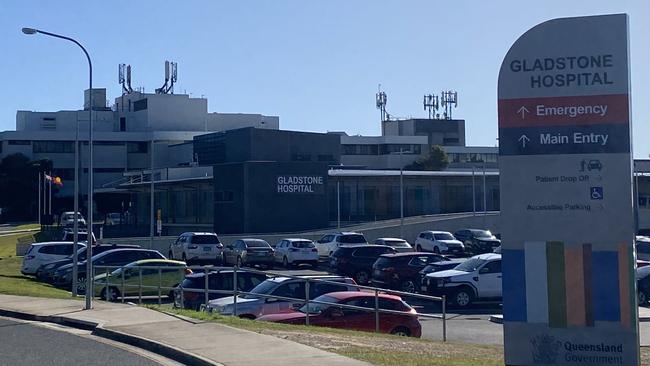
This has forced labouring mothers and their families to drive more than an hour up the Bruce Highway to Rockhampton and even resulted in another Biloela mother giving birth in the back of an ambulance while the next major hospital to the north, Mackay, is still reeling from systemic failures which left three babies dead and dozens of women scarred.
Now, documents obtained by this publication reveal an Office of the Health Ombudsman (OHO) review flagged serious failures and shortcomings in Mrs Rousseau’s care which have sparked changes to procedures at Gladstone and prompted an apology from the region’s health chief.
The first critical mistake
She knew something wasn’t right.
Hers was not a “typical pregnancy from the start” after undergoing gastric sleeve surgery and an abdominoplasty tummy tuck three years ago, she was concerned about damaged nerves in her lower half and wanted to explore the potential of using an existing scar for her C-section.
Mrs Rousseau, who was already mum to 10-year-old Jet, was also tired and experiencing reduced foetal movements.
Clinical notes referred to in the OHO review confirm she was complaining of fatigue by May 24, and revealed the midwife at the time prescribed an iron supplement for her low ferritin levels.
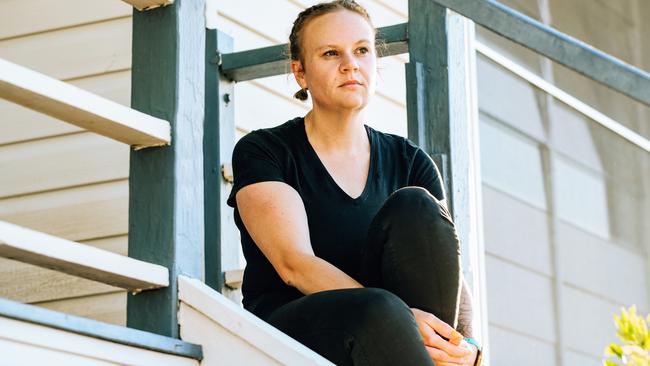
It was during an earlier appointment that Mrs Rousseau informed the hospital of an “unprofessional” midwife who “dumped her personal life” by discussing relationship issues and child custody arrangements, before she pleaded for the worker to not take part in her future care.
In her complaint to the OHO, Mrs Rousseau, identified the critical juncture in her care was during that May hospital visit when, at 27 weeks pregnant, she was told she couldn’t see a doctor until she’d reached 30 weeks’ gestation.
This was despite the specialist appointment being confirmed the day prior.
“(A woman said) the doctor wouldn’t see me,” Mrs Rousseau said
“I (said) I don’t understand, I travelled all this way … I was baffled, walked to the car and bawled my eyes out,” she said.
After viewing clinical notes and consulting with Central Queensland Health and Hospital Service (CQHHS), the OHO review does not dispute Mrs Rousseau was sent away without seeing the doctor.
It also supports her claims she was referred to Central Queensland Radiology (CQR) for growth and wellbeing scans, which was set for June 16 to coincide with her upcoming antenatal appointment.
Mrs Rousseau said her June 16 scan only happened because she sought out the midwife navigator service and was advised if she could get a nurse to list her scan as “urgent” she could be “squeezed in”.
At the time of that ultrasound “the manager notes that the junior sonographer had concerns and subsequently escalated to the senior sonographer on duty”.
According to the OHO report, “the CTG was noted to be abnormal, and decision made for Category One emergency C-section with paediatric consultant to be available for delivery”.
“In line with urgency of this C-section (the patient) was given a general anaesthetic which was appropriate given the emergent situation.”
It was later revealed the scan had shown Hydrops fetalis, a life-threatening condition in which abnormal amounts of fluid had accumulated in the brain and bowel of the growing baby.
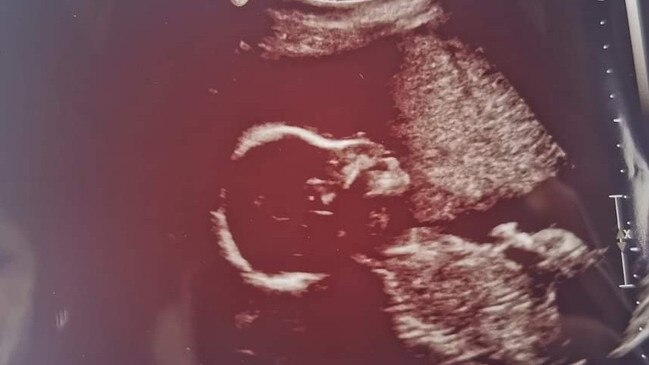
The hydrops had formed sometime between an April 11 ultrasound and the all-too-late scan which led to the emergency C-section.
Mrs Rousseau said she was told the case was the most severe seen in Gladstone.
She and her husband believe early detection would have meant they were relocated to Brisbane for monitoring and Fallon could still have been saved.
“Babies with hydrops can survive but when you’re refused your right to access medical care, I guess we are just left to wonder,” she said.
The hardest day
“Where’s my baby?”
These are the words Mrs Rousseau remembers saying as she slowly woke from general anaesthesia.
“The only word that I could hear them say was ‘stillborn’ there was nothing else really mentioned to us,” she said.
“One day there is a baby, the next day she is literally ripped out of you.”
Following the scans, which prompted the emergency birth, Richard Rousseau had to leave his wife to collect their son from Biloela.
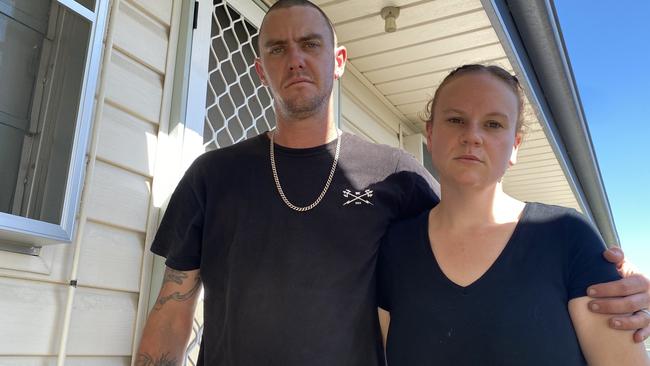
“I was an absolute mess, I didn’t know if I was going to come back to a baby and a wife, or a wife and no baby, or nobody at all,” Mr Rousseau said.
“I walked into the room to see Gabby, nobody has told me anything, I couldn’t see the baby anywhere … the nurse then told me the baby died during childbirth and they couldn’t resuscitate her,” he said.
That night, the grieving couple were placed in room 14 of the Gladstone Maternity Ward, and while it may have been the furthest practical room for them to rest, doting mums and their crying newborns remained within earshot, only adding to their distress.
While the couple were initially left alone with a “do not disturb” note on the door, Mrs Rousseau claims another couple was soon moved into the room beside and the two shared a shower and toilet.
A Sunday Mail investigation recently revealed the cruel co-locating of newborns with women who have had stillbirths, terminations, miscarriages and gynaecological cancers was still happening at Royal Brisbane and Women’s Hospital and other Queensland hospitals despite previous claims from the state’s health minister that the measure was only temporary due to Covid.
Things got even worse when, according to Mrs Rousseau, she was greeted the following morning by the same midwife she earlier pleaded not to see and was allegedly asked whether the couple would “try again”.
“The baby was not even in the morgue for 12 hours … it’s the most disgusting thing I have ever heard and it was not something I had begun to process,” she said.
The aftermath
Returning home to begin processing their loss, the Rousseau’s knew they’d deserved better and demanded an explanation which would hopefully prevent another couple from enduring the same.
The more they dug, the more information they found had been withheld or simply not passed on.
“It wasn’t until we received the interim death certificate and while we were trying to figure out the cremation and everything else that we read she also had clubbed feet … also, she was alive for three minutes, none of that information was given to us,” she said.
“I don’t feel like they should have been able to pick and choose what details were given to us at the time and to find that out, you know, months after the fact it just takes you straight back there and you relive it all over again.”
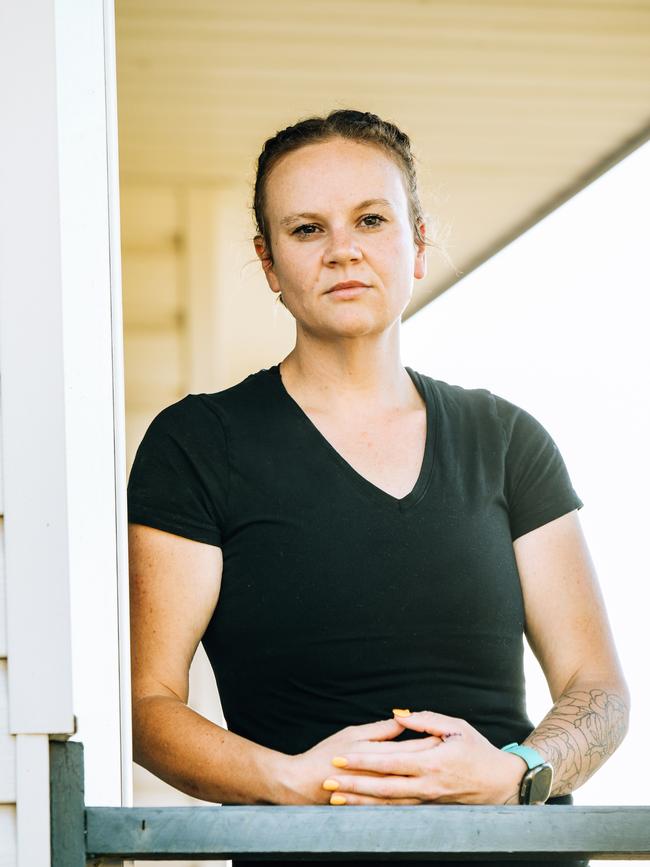
The OHO report states that CQHHS “acknowledged (the patient) should have been provided with access to medical officer before 30 weeks’ gestation due to her Category-C risk rating”.
It goes on, “CQHHS stated it will review its processes for booking women to medical officer antenatal clinics”.
“CQHHS indicated (her) initial booking could have been scheduled earlier due to her identified risk factors and gestation at referral.”
“CQHHS has identified this as a system improvement activity which has been referred to the Women’s and Newborn Unit Manager for appropriate follow up.”
The full complaint has now been referred to the hospital service to allow for the suggested improvements and to inform the OHO of their outcome.
“Referral of the matter to CQHHS also allows CQHHS to deal with the complaint in ways it considers appropriate, which may include a clinical review to determine whether the foetal condition could have been identified earlier in the pregnancy, or to facilitate discussions or meetings between representatives of CQHHS, (the patient) and her partner,” the report reads.
CQHHS Executive Director Gladstone and Rural, Monica Seth, said “patient safety and quality care is the health service’s number one priority, and when care is not optimal it is imperative they learn what they can to improve services”.
“I am very sorry for Mrs Rousseau’s loss,” Ms Seth said.
“I cannot provide details of an individual’s health care,” she added.
“Wherever possible, Gladstone Hospital offers a single room with an ensuite to families who have had a stillbirth to respect their privacy during a very difficult time.”
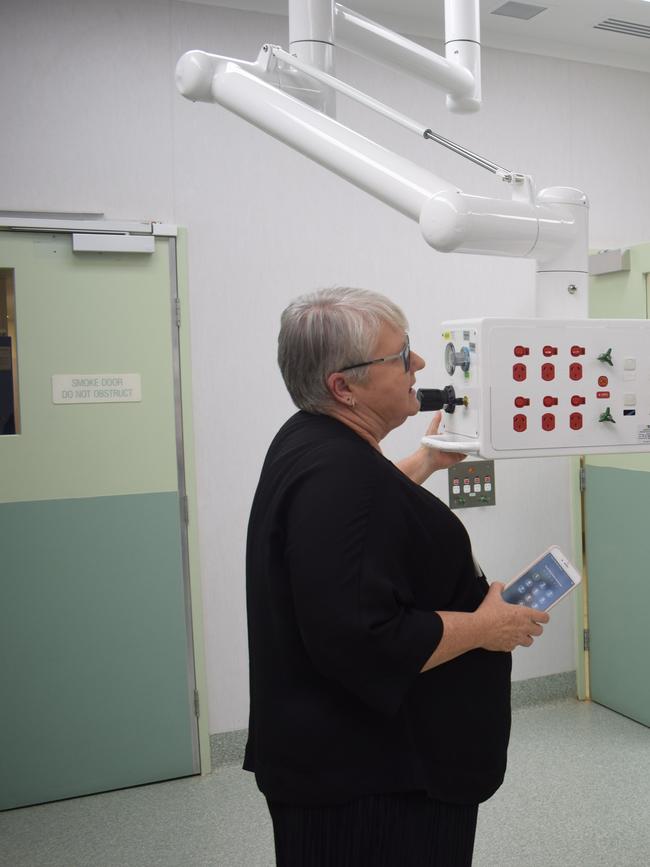
Ms Seth said the referral system for pregnant women had since been streamlined and staff had been made aware.
A Queensland Health spokesperson said women who experienced birth trauma or any other trauma related to the loss of a baby were treated in state hospitals with “the utmost respect and dignity, and provided safe and appropriate care specific to their individual circumstance”.
“Some women experiencing pregnancy loss do require the specialist care of a midwife which can only be delivered in maternity wards,” the spokesperson said.
“If admission to the maternity ward is clinically required, women experiencing pregnancy loss are treated in a single-patient room in an area that is located as far away as reasonably possible from women who have recently given birth.”




